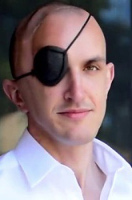We’ve been actively working to acquire a venue for over a year, and are now the closest we’ve ever been to actually having it. We have closed the deal on a venue in Bodega Bay, the Bay Hill Mansion:

That means we’ve determined the property is suitable—in terms of cost, zoning, permitting, and structure—for us to run essentially all of our programs, and we’ve finished negotiating with the current owners about the terms of the purchase.
Getting to this point has been a harrowing, kafkaesque tale of misery punctuated by visits to cool mansions that almost all turned out to be unsuitable in hidden ways. Adam Scholl did almost all the leg work over the past six months and brought us this close to the end, and he may do a tragi-comedy write-up of the whole ordeal, if he can stomach it.
Endless bureaucracy, inadequate septic systems, and terminally grumpy neighbors notwithstanding, the only thing left at this point is to finalize funding for the property, which may go quickly and smoothly… or it may implode the deal.
Our top option right now is an institutional grant that we’ve requested and feel hopeful about for the down payment, plus a traditional commercial mortgage for the remainder. If that doesn’t work, there’s a long-shot possibility that we can cobble together the down payment in other ways, but one thing is certain: as close as we are, nothing is certain.
Having a venue versus not having a venue are worlds apart in terms of what CFAR can do next year and the years that follow.
CFAR brought in around $1.5 million in 2017 (from a combination of revenue, donations, and grants), which comprises the entire budget for our operations and the 18 major programs (which include alumni programs like CFAR Tier 2), plus dozens of smaller events and programs.
Almost $500,000 of that money went to renting venues for those events. That doesn’t include food, supplies, or services like laundry; it only includes payments made directly to the owners of the various venues we rent on a per-event basis. The only larger expense category CFAR has is payroll.
That’s an average of around $41,000 per month on renting workshop space, without counting the human and payroll cost of the elaborate event setup and breakdown that we do before and after each event. That cost buys us about 10 workshop days per month.
A commercial mortgage on the Bay Hill Mansion, plus maintenance expenses, will be around $10,000 a month—possibly more like $6,000 a month depending on the exact terms of the loan—and will buy us the entire month, every month, of potential workshop days. In addition, acquiring a venue would make our setup and breakdown processes become nearly trivial (e.g. we could clean up the morning after a program and be running another program by that evening, if we needed to).
The most conservative estimate of our savings in this scenario, which doesn’t account for the saved staff time or for the increased volume of workshops we would be able to run, is about $380,000—more than our total individual donations in 2017.
A more accurate number would include the approximately 80 person hours per workshop spent on setup and breakdown, and the 33% increase in number of workshops made possible by the venue. With a total cost of $37.50 per staff member per hour, 27 major programs (nine more than last year), that comes to more like $600,000 in counterfactual savings1.2
With our marginal cost per workshop slashed by over half, the bottom line is that getting this venue would mean being able to run way more of our highest impact workshops in 2018.
-
$380,000 ⨉ 133% = $505k, $37.50 ⨉ 80 hours ⨉ 27 programs = $81k, $505k + $81k = $586k. ↩
-
This math pretends that setup and breakdown would be zero effort, instead of 80 person hours, which isn’t literally true. But we would contract for cleaning and laundry, and be able to almost fully automate our nonperishable food and classroom supply inventory, making the marginal effort of workshop venue operations for a CFAR staff member less than an hour per workshop. The total cost of that marginal effort for all workshops for the year in this world would be a little over $1,000, which is a rounding error. ↩


